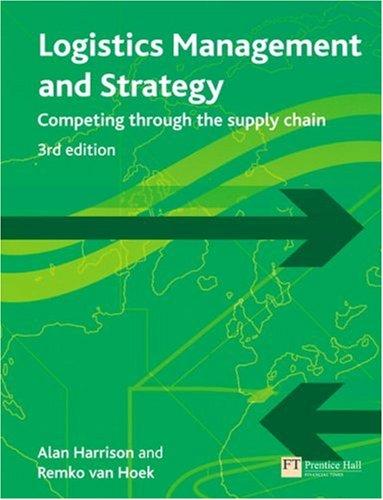3 Which trade-offs must be made when setting up a global SCM network for the apparel industry?...
Question:
3 Which trade-offs must be made when setting up a global SCM network for the apparel industry? Also discuss the trade-offs regarding sourcing countries versus quality. The enormous success of vertical retailers like H&M, Zara, Gap and Next in the apparel industry in the last 10 years has forced manufacturers of brand labels like Esprit and Levi, and department stores like El Corte Ingles and Marks & Spencer, to speed up their supply chains. Partly, this has been achieved by integrating their processes and systems upstream (towards their suppliers) and downstream (towards their end-customers) in the supply chain.
The competitive environment in the apparel industry is increasingly tough. Retail prices are under pressure; competition is extending from products that were traditionally limited to upper, middle or lower segments of the market – and increasingly from the sports industry; gross margins are shrinking; retail store costs and personnel costs are going up. Those who do not manage their assortment planning and inventories well are continuously under pressure to mark down their merchandise. Vertical retailers have found an answer to this hostile environment by:
● increasing the probability of designing a bestseller product by dramatically shortening its time to market (see Chapter 5);
● piloting products in the stores and then replenishing the best-sellers within 14 days by new types of make-to-order processes
Step by Step Answer:

Logistics Management And Strategy Competing Through The Supply Chain
ISBN: 9780273712763
3rd Edition
Authors: Alan Harrison, Remko Van Hoek






